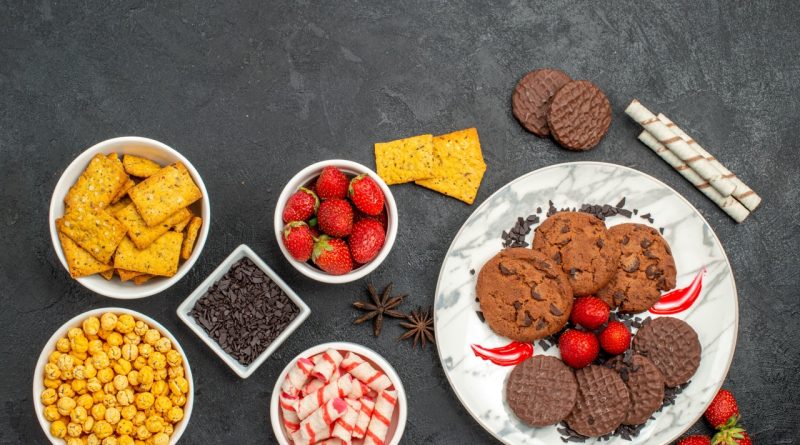How to Choose the Right Ladle for Serving Soups and Sauces
===
When it comes to serving soups and sauces, the right ladle can make all the difference. Not just a simple kitchen tool, a ladle is an essential piece of equipment that enhances both functionality and presentation. Choosing the appropriate ladle involves understanding various types available, the materials they are made from, and their sizes and shapes. This article will guide you through the selection process to ensure you choose the right ladle for your culinary needs.
Understanding Different Types of Ladles for Serving Soups
Ladles come in various designs, each catering to specific tasks in the kitchen. The most common type is the soup ladle, characterized by a deep bowl and a long handle, which makes it perfect for serving hot liquids. However, there are also smaller ladles specifically designed for sauces, gravies, and dressings, often featuring a narrower bowl to control the pour. Choosing the correct type of ladle ensures you can serve any dish with precision and ease.
Another type worth exploring is the slotted ladle, which contains holes or slots in the bowl to allow for draining excess liquid. This type is particularly useful when serving dishes like steamed vegetables or dishes that require some sauce to be retained. Each ladle type serves a distinct purpose, making it essential to consider what you will be using it for most frequently.
Lastly, there are specialized ladles such as the punch ladle, which is larger and designed for serving beverages in bulk. Understanding the variety of ladles available helps clarify which one fits your specific cooking and serving needs, ultimately enhancing your kitchen experience.
Key Materials: Selecting the Best Ladle for Your Needs
When selecting a ladle, the material it is made from plays a crucial role in its performance and longevity. Common materials include stainless steel, plastic, wood, and silicone. Stainless steel ladles are durable and non-reactive, making them perfect for serving acidic soups or sauces. They’re also easy to clean and generally dishwasher-safe, making them a practical choice for busy kitchens.
Plastic ladles are lightweight and often come in a variety of colors and designs. They are ideal for use with non-stick cookware, as they won’t scratch the surface. However, they may not be heat-resistant, which can limit their use in high-temperature situations. It is essential to check the heat tolerance of plastic ladles before incorporating them into your kitchen arsenal.
Wooden ladles offer a classic and rustic touch, and they are safe to use with all types of cookware. They can absorb flavors from food, which can enhance the taste of your dishes but may require more maintenance. Silicone ladles are a newer alternative, offering flexibility and heat resistance while being safe for non-stick pans. Each material has its pros and cons, so understanding your cooking habits will help you choose the most suitable ladle.
Size and Shape: Finding the Perfect Ladle for Sauces
The size and shape of a ladle are critical factors to consider, especially when serving sauces that require precision. A standard soup ladle typically holds about 4 ounces of liquid, making it suitable for serving bowls of soup. However, for sauces, you may want a smaller ladle to allow for more controlled pouring and to avoid overwhelming your dish with too much liquid at once.
The shape of the ladle’s bowl also affects how it pours. A ladle with a wide, rounded bowl is excellent for serving thicker soups or stews, while a ladle with a more tapered, narrow bowl is ideal for thin sauces or gravies. The slight variations in ladle design can significantly impact how you serve your dishes, so it’s essential to choose one that aligns with the type of foods you often prepare.
Additionally, consider the handle length and angle. A longer handle allows for better reach, especially when serving from deep pots, while an angled handle can provide a more ergonomic grip. Assessing the overall size and shape of the ladle in relation to your typical serving needs will ensure you can serve your soups and sauces with ease and elegance.
Care and Maintenance Tips for Longevity of Your Ladle
To ensure that your ladle lasts for years to come, proper care and maintenance are vital. For stainless steel ladles, handwashing is often recommended to maintain their shine and prevent scratches that may occur in the dishwasher. Avoid using abrasive cleaners, as these can damage the surface of the ladle over time. Regularly drying the ladle immediately after washing will help prevent water spots and maintain its luster.
If you have wooden ladles, they require special care to keep them in top shape. Avoid soaking them in water, as this can cause the wood to warp or crack. Instead, wash them with mild soap and warm water, and allow them to air dry standing upright. Periodically applying food-safe mineral oil will keep the wood hydrated and prevent cracking, prolonging the life of your wooden ladle.
For silicone and plastic ladles, check the manufacturer’s recommendations for cleaning and care. Many are dishwasher-safe, but high temperatures can cause warping or damage. Following these care tips will not only extend the life of your ladle but also ensure that it continues to perform effectively in your kitchen.
===
Choosing the right ladle for serving soups and sauces is an important decision that can enhance your cooking and dining experience. By understanding the various types of ladles, selecting the appropriate materials, and considering size and shape, you can find the perfect ladle that meets your needs. Moreover, proper care and maintenance will ensure your ladle remains functional and attractive for years to come. With the right ladle in hand, you’ll be equipped to serve your favorite dishes with confidence and style.
